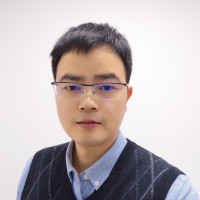Pollution & Health
Post-Doctoral Fellowships
United Kingdom
Overcoming the Ecotoxicological Impact of Perovskite Photovoltaic Technologies
However, critical concerns remain over the potentially high ecotoxicological impact of perovskite solar cells arising from the combined effects of 1) excessive quantities of lead typically required in such semiconductors for optimal device performance, which could result in researchers’ and workers’ contamination; and 2) lack of understanding and control of the leaching of lead into the surrounding environment. The consequences could be irreversible not only for human health but also for the natural environment, which can be a critical barrier hampering the entry of perovskite solar cells into the European Union and the global photovoltaics market.
During his AXA Fellowship, Dr. Meng Li will look for a solution to this challenging issue by establishing a new knowledge framework on the relationships between perovskite semiconductors’ materials structure and their ecotoxicity. To conduct this project, he will investigate qualitatively and quantitatively the lead leaching products, their leaching mechanisms, and consequent ecotoxicological impacts of various types of lead-based perovskite semiconductors as a function of their material design. Zebrafish will be used to detect the biological hazards of lead leakage, and multifunctional materials will be added to perovskite devices to inhibit the dissolution of lead and reduce its biotoxicity. In addition, Dr. Li will leverage this knowledge framework to develop novel perovskite semiconductors, which will contain less lead leaching rates but with the same optoelectronic properties, resulting in the first crucial step toward the new generation of high performance and eco-friendly perovskite solar cells.
The project’s outcomes could revolutionize the EU’s and UK’s solar energy sectors by helping these economies achieve their 2050 carbon neutrality and clean growth goals. The new knowledge generated, especially on understanding the ecotoxicological impacts of perovskite solar cells and their mitigation, will provide valuable evidence and guidance for adopting new policies and regulations on the design, manufacturing, usage, and recycling of technologies based on perovskite semiconductors.
May 2022
Expected start date: Summer 2022
Learn More About the AXA Fellowship in Harmful Substances

Meng
LI
Institution
Queen Mary University of London
Faculty of Science and Engineering
Country
United Kingdom
Nationality
Chinese
Related articles
Pollution & Health
Prevention & Personalised Health
Post-Doctoral Fellowship
Australia
Understanding Human Exposure to Contaminants of Emerging Concern Through New Biomarkers
Human biomonitoring (HBM) allows the assessment of human exposure to chemicals, by measuring chemicals and their concentration in human tissues... Read more

Chang
HE
The University of Queensland
Pollution & Health
Food & Nutrition
Post-Doctoral Fellowship
France
Investigating the Impact of Glyphosate on Health: The Role of Gut Microbiota
Dr. Lauris Evariste aims to investigate the impact of chronic glyphosate exposure on the mouse and human gut microbiota and... Read more

Lauris
EVARISTE
Institut National de Recherche pour l'Agriculture, l'Alimentation et l'Environnement
Pollution & Health
Post-Doctoral Fellowship
Luxembourg
Using New Data Sources to Better Manage Substances of Concern (Soc)
In order to put together an accurate risk management process and drive the appropriate regulatory policies, it is necessary to... Read more

Oona
FREUDENTHAL